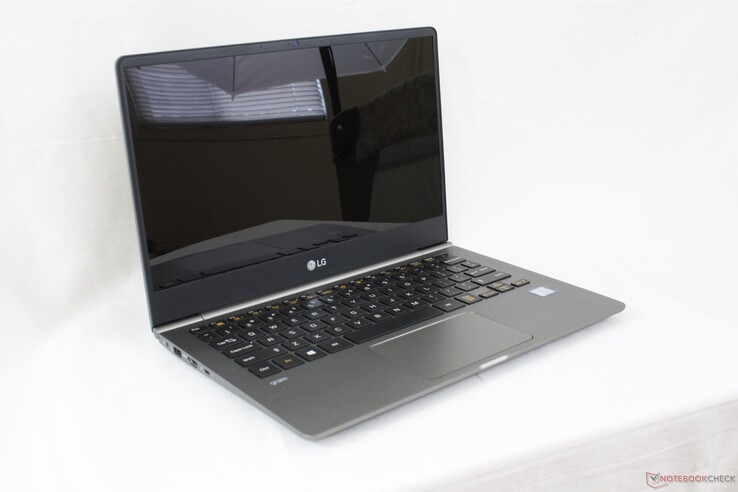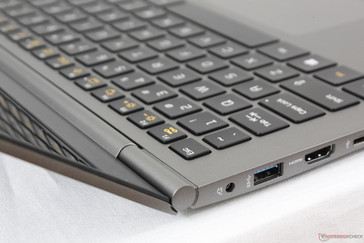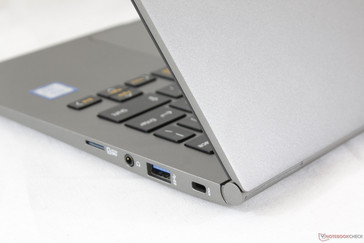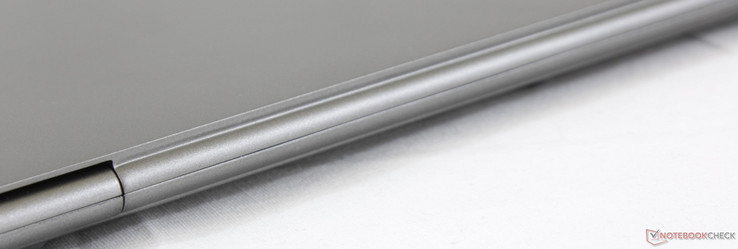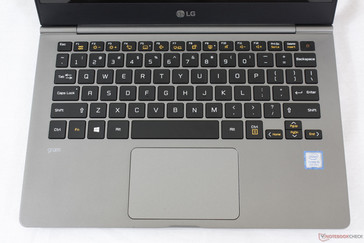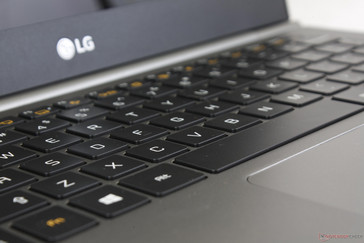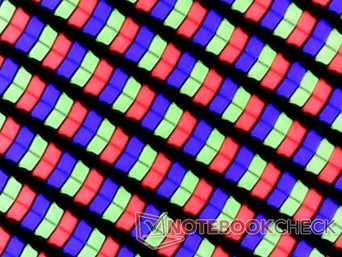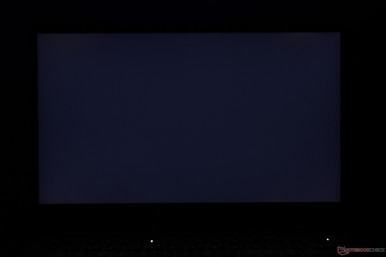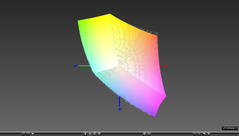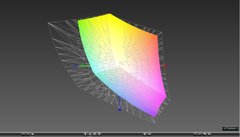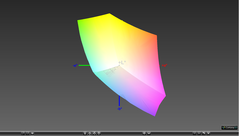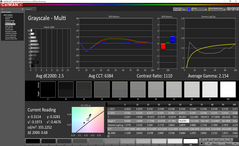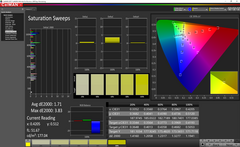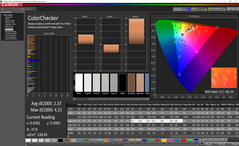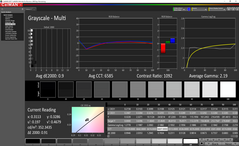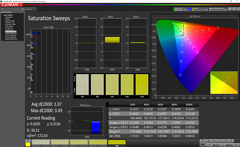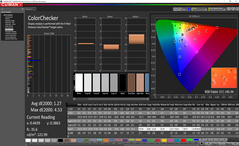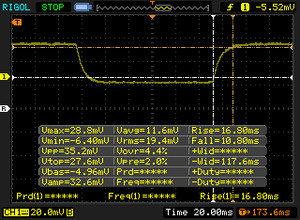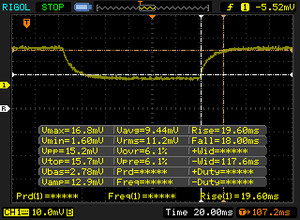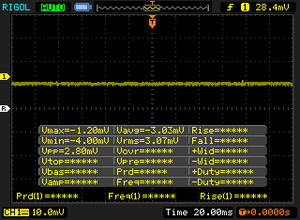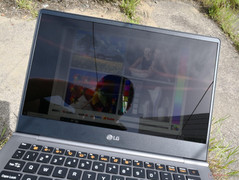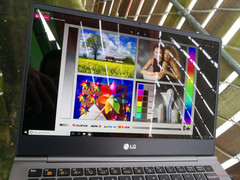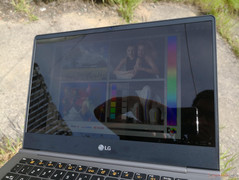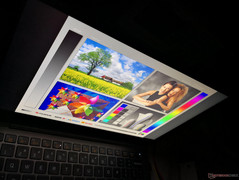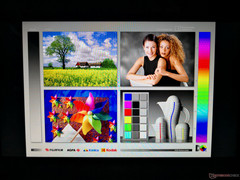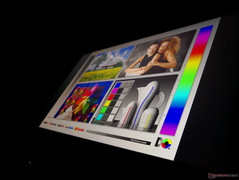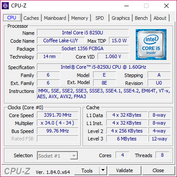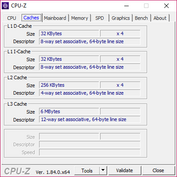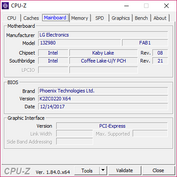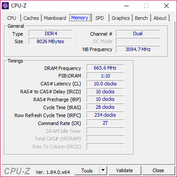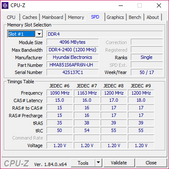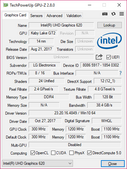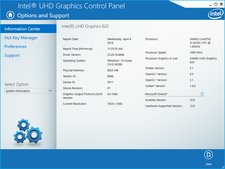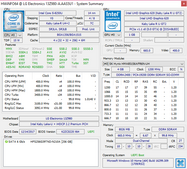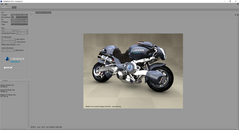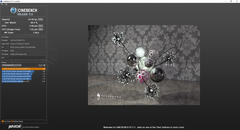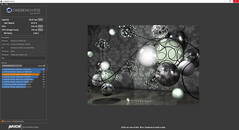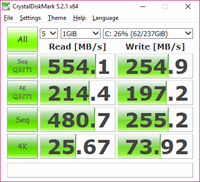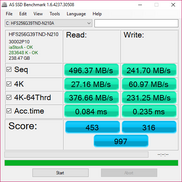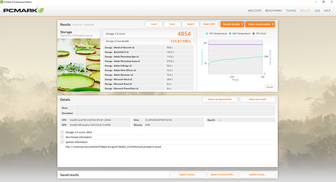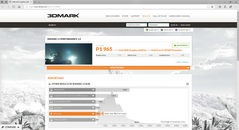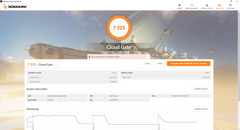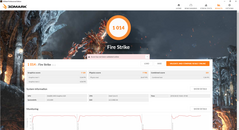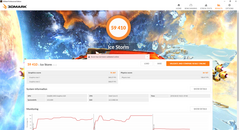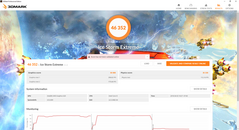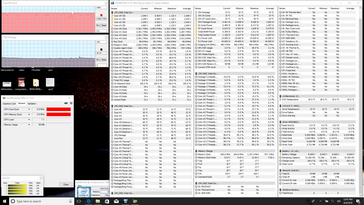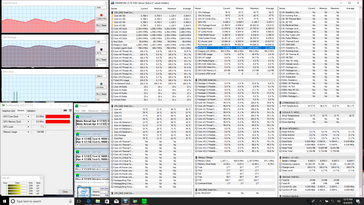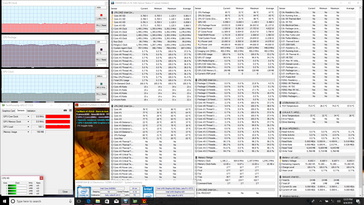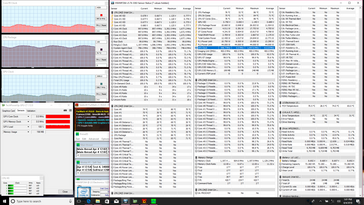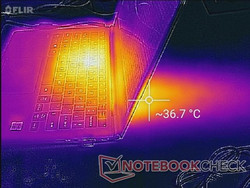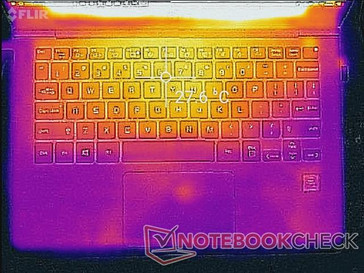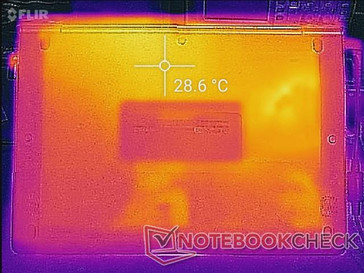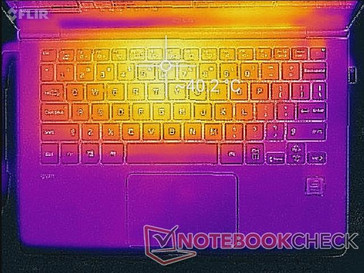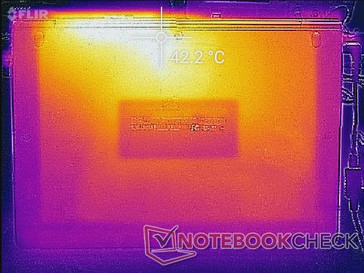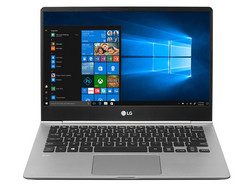LG Gram 13Z980-A (i5-8250U) Laptop Review
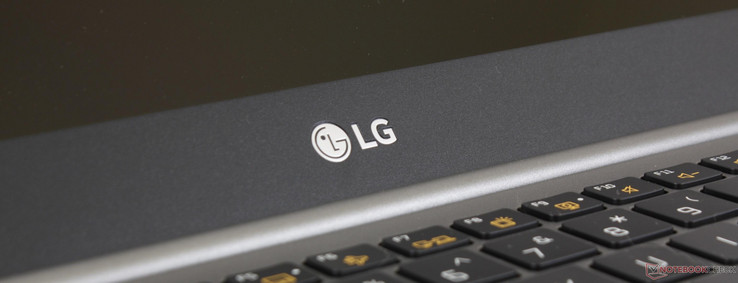
The LG Gram series aims to offer some of the lightest Ultrabooks in the market. Available sizes so far include 13-inch, 14-inch, and 15-inch models that each share a wide range of similarities. All models, for example, utilize magnesium alloy, Intel U-class CPUs, no discrete GPUs, and no overlying layer of Gorilla Glass in order to cut down on weight as much as possible.
Our test model today is the 13.3-inch Gram 13Z980 to succeed the last generation Gram 13Z970. The material and design are very nearly the same between them save for the revised placement of the webcam and the addition of a fingerprint reader on the Power button. SKUs are very limited at the time of writing with many core features being fixed such as the 1080p resolution, 8 GB of RAM, and 256 GB of storage with either the Core i5-8250U or Core i7-8550U ranging from $1100 USD to $1400 USD.
Competitors in the 13-inch space are wide and varied. Popular models are the Dell XPS 13, Samsung Notebook 9 NP900X3N, Lenovo Yoga 920, Razer Blade Stealth, Asus Zenbook 3, and the Microsoft Surface Laptop to name a few.
Case
Visually, the Gram 13 is similar to the Gram 15 in the same way that the Dell XPS 13 shares defining characteristics and materials with the XPS 15. The chassis utilizes both magnesium and carbon for matte gray surfaces that are slightly rough to the touch without feeling like cheap plastic. The palm rests, lid, and bottom panel are all identical in composition save for the inner black plastic display bezel. Some users may argue that it's an overall dull design since the Gram series is lacking the glossy brushed surfaces or golden chrome-cut edges and corners, but others may appreciate the more business-friendly and understated look.
Chassis quality is excellent from top to bottom with no unintended gaps or defects between materials despite the faux uni-body appearance. The design is MIL-STD 810G-certified against seven different stressful conditions for durability. Chassis rigidity, however, is another story. The lid is again very flexible not unlike on the Samsung NP900X3N or larger LG Gram 15. It is indubitably weaker than the lids of the XPS 13 9360/9370, Razer Blade Stealth, HP Spectre 13, Lenovo ThinkPad X1 Carbon, and the MacBook Air. The comparatively poor rigidity can be attributed to the lack of Gorilla Glass reinforcement, narrow bezels, and very thin skeleton. Those who desire a more strongly built system may want to look outside of the Gram series.
Meanwhile, the rigidity of the base is above average but still yields more to pressure than the examples above. Pushing down on the center of the keyboard, for example, will warp it slightly and attempting to twist the base from its front two corners will cause minor flexing and creaking. The more flexible chassis is perhaps the price to pay for such a lightweight design.
In terms of weight, the Gram 13 is noticeably lighter than most competitors in its size category by a few hundred grams as shown by the comparison tool below. The notable exception is the Samsung NP900X3N which is even lighter by nearly 150 g. Note that the LG system is larger than the latest XPS 13 in all three dimensions while weighing much less for a hollower and less dense first impression. It's clear that the manufacturer designed its Gram series to be a common baggage or backpack item where weight can be a major factor.
Connectivity
Available ports are identical to the Gram 13Z970. It's disappointing to not see LG make any significant changes as there is still no Thunderbolt 3 support or the ability to charge the system via USB Type-C. The former is an odd omission as the latest Gram 15Z980 refresh integrates Thunderbolt 3 and the latter would have discarded the need for a proprietary AC charging port. Otherwise, all ports are easy to reach and evenly distributed between the two sides of the system.
SD Card Reader
The spring-loaded MicroSD card reader is limited to transfer rates of about 85 MB/s whereas the same MicroSD reader on the XPS 13 9370 can be over twice as fast. Transferring 1 GB worth of images from our UHS-II test card to desktop takes about 15 seconds.
| SD Card Reader | |
| average JPG Copy Test (av. of 3 runs) | |
| Dell XPS 13 9370 FHD i5 (Toshiba Exceria Pro M501 64 GB UHS-II) | |
| LG Gram 13Z980-A (Toshiba Exceria Pro M501 UHS-II) | |
| Samsung Notebook 9 NP900X3N-K01US (Toshiba THN-M401S0640E2) | |
| maximum AS SSD Seq Read Test (1GB) | |
| Dell XPS 13 9370 FHD i5 (Toshiba Exceria Pro M501 64 GB UHS-II) | |
| Samsung Notebook 9 NP900X3N-K01US (Toshiba THN-M401S0640E2) | |
| LG Gram 13Z980-A (Toshiba Exceria Pro M501 UHS-II) | |
Communication
WLAN is provided by an Intel 8265 module with integrated Bluetooth 4.2. A real-world test standing one meter away from our Linksys EA8500 test router returns a transfer rate of 637 Mbps. We experienced no recurring connectivity issues during our time with the unit.
| Networking | |
| iperf3 transmit AX12 | |
| Dell XPS 13 9370 FHD i5 | |
| Samsung Notebook 9 NP900X3N-K01US | |
| LG Gram 13Z980-A | |
| iperf3 receive AX12 | |
| Samsung Notebook 9 NP900X3N-K01US | |
| LG Gram 13Z980-A | |
| Dell XPS 13 9370 FHD i5 | |
Accessories
A USB Type-C to RJ-45 adapter is included alongside the usual warranty card, setup guide, and AC adapter.
Maintenance
The bottom panel is secured by Philips screws hidden underneath the rubber feet and covers. The rubber feet are glued to the base extremely tightly and removing them would be difficult without scratching the bottom panel. Users can expect dual M.2 2280 bays and only fixed RAM.
Warranty
The standard one-year limited warranty applies while the battery is guaranteed for only half that time frame. LG's warranty information can be found here.
Input Devices
Keyboard
The chiclet keyboard layout (~26.0 x 10.8 cm) is unchanged from the last generation except for the integration of the fingerprint reader on the corner Power button. Key feedback is satisfactory with relatively quiet clatter. The Space key and smaller Directional and Function keys, however, are softer in feedback and could have been firmer. We would have to give the edge to the keyboards of the Samsung NP900X3N and XPS 13 for having stiffer and more uniform key feedback between all keys than the LG.
An integrated keyboard backlight comes standard with just two levels of brightness.
Touchpad
The smooth plastic trackpad (10.5 x 7.0 cm) is larger than the ones on the Samsung NP900X3N (10.0 x 6.0 cm) and XPS 13 9360 (10.5 x 6.0 cm) for easier cursor control and multi-touch gestures. Glide can become slightly sticky when moving very slowly that users may need to become accustomed to.
The integrated mouse buttons offer average tactile feedback and a high-pitched auditory click when pressed. Travel, however, is very spongy and uneven compared to other integrated clickpads like on the XPS 13 or Spectre 13. Pushing down just halfway from a full click will depress a portion of the trackpad surface whereas trackpads on most popular higher-end Ultrabooks are stiffer.
Display
The glossy display is limited to 1080p with optional touchscreen. As expected, LG is responsible for providing the panel to its own laptops. Contrast and colors are comparable and typical of competing flagship Ultrabooks. Unfortunately, the display backlight is average as there are a handful of brighter Ultrabooks for better outdoor visibility including the XPS 13 9370 and Samsung NP900X3N. Subjectively, texts and images are crisp and appear very close to the display surface since there is no glass protection.
The touchscreen feels more fragile to use compared to the touchscreens on other Ultrabooks. Its surface warps more easily to pressure and is prone to scratches as well. The consequence of having no Gorilla Glass is very evident and heavy touchscreen users may want to consider an alternative Ultrabook with a stronger lid.
Uneven backlight bleeding is minimal and unnoticeable during movie playback or web browsing.
Enabling "Reader Mode" automatically reduces brightness and mutes Blue colors to reduce eyestrain. The feature is particularly handy when working in dimly lit environments like airplane flights or darkened rooms.
| |||||||||||||||||||||||||
Brightness Distribution: 89 %
Center on Battery: 347.8 cd/m²
Contrast: 966:1 (Black: 0.36 cd/m²)
ΔE ColorChecker Calman: 2.37 | ∀{0.5-29.43 Ø4.78}
calibrated: 4.21
ΔE Greyscale Calman: 2.5 | ∀{0.09-98 Ø5}
97% sRGB (Argyll 1.6.3 3D)
62.5% AdobeRGB 1998 (Argyll 1.6.3 3D)
67.9% AdobeRGB 1998 (Argyll 3D)
97.3% sRGB (Argyll 3D)
66.9% Display P3 (Argyll 3D)
Gamma: 2.15
CCT: 6384 K
| LG Gram 13Z980-A LG LP133WF6-SPC1, IPS, 13.3", 1920x1080 | Samsung Notebook 9 NP900X3N-K01US ID: BOE06E1, Name: NV133FHB-N31, IPS, 13.3", 1920x1080 | Dell XPS 13 9370 FHD i5 SHP1484, IPS, 13.3", 1920x1080 | HP Spectre 13-af033ng AU Optronics AUO422D, IPS, 13.3", 1920x1080 | Lenovo Yoga 920-13IKB-80Y7 AU Optronics B139HAN03.0, IPS, 13.9", 1920x1080 | Huawei MateBook X Chi Mei CMN8201 / P130ZDZ-EF1, , 13.3", 2160x1440 | |
|---|---|---|---|---|---|---|
| Display | -7% | 2% | -5% | -6% | -2% | |
| Display P3 Coverage (%) | 66.9 | 63.4 -5% | 68.9 3% | 64 -4% | 62.5 -7% | 65.8 -2% |
| sRGB Coverage (%) | 97.3 | 88.6 -9% | 96.6 -1% | 90.7 -7% | 91.7 -6% | 96.2 -1% |
| AdobeRGB 1998 Coverage (%) | 67.9 | 64 -6% | 69.6 3% | 65.1 -4% | 64.1 -6% | 66.8 -2% |
| Response Times | -17% | -66% | 21% | -18% | 13% | |
| Response Time Grey 50% / Grey 80% * (ms) | 37.6 ? | 41.6 ? -11% | 62.4 ? -66% | 27 ? 28% | 46 ? -22% | 33 ? 12% |
| Response Time Black / White * (ms) | 27.6 ? | 34 ? -23% | 45.6 ? -65% | 24 ? 13% | 31.6 ? -14% | 24 ? 13% |
| PWM Frequency (Hz) | 210.1 ? | 1008 ? | ||||
| Screen | -10% | -7% | -8% | -54% | 11% | |
| Brightness middle (cd/m²) | 347.8 | 510.7 47% | 428 23% | 304 -13% | 297.9 -14% | 408 17% |
| Brightness (cd/m²) | 331 | 481 45% | 405 22% | 287 -13% | 278 -16% | 395 19% |
| Brightness Distribution (%) | 89 | 90 1% | 87 -2% | 80 -10% | 81 -9% | 88 -1% |
| Black Level * (cd/m²) | 0.36 | 0.66 -83% | 0.26 28% | 0.21 42% | 0.44 -22% | 0.45 -25% |
| Contrast (:1) | 966 | 774 -20% | 1646 70% | 1448 50% | 677 -30% | 907 -6% |
| Colorchecker dE 2000 * | 2.37 | 2.4 -1% | 3.8 -60% | 3.66 -54% | 5.1 -115% | 1.55 35% |
| Colorchecker dE 2000 max. * | 4.21 | 7.3 -73% | 7.2 -71% | 5.66 -34% | 11 -161% | 2.19 48% |
| Colorchecker dE 2000 calibrated * | 4.21 | |||||
| Greyscale dE 2000 * | 2.5 | 2.4 4% | 4.4 -76% | 3.51 -40% | 6.7 -168% | 1.91 24% |
| Gamma | 2.15 102% | 2.23 99% | 2.21 100% | 2.55 86% | 2.9 76% | 2.34 94% |
| CCT | 6384 102% | 6747 96% | 7067 92% | 6955 93% | 6839 95% | 6491 100% |
| Color Space (Percent of AdobeRGB 1998) (%) | 62.5 | 57 -9% | 62.8 0% | 59 -6% | 64.1 3% | 61 -2% |
| Color Space (Percent of sRGB) (%) | 97 | 88.1 -9% | 96.4 -1% | 91 -6% | 91.7 -5% | 96 -1% |
| Total Average (Program / Settings) | -11% /
-10% | -24% /
-13% | 3% /
-4% | -26% /
-39% | 7% /
9% |
* ... smaller is better
Colors and grayscale are accurate even before any calibration attempts. The DeltaE averages for grayscale and colors sit at just 2.5 and 1.71, respectively, when fresh out of the box to be more accurate than many other competing notebooks. Our calibration attempts improve the properties of the display measurably if not only marginally.
Display Response Times
| ↔ Response Time Black to White | ||
|---|---|---|
| 27.6 ms ... rise ↗ and fall ↘ combined | ↗ 16.8 ms rise | |
| ↘ 10.8 ms fall | ||
| The screen shows relatively slow response rates in our tests and may be too slow for gamers. In comparison, all tested devices range from 0.1 (minimum) to 240 (maximum) ms. » 69 % of all devices are better. This means that the measured response time is worse than the average of all tested devices (20.2 ms). | ||
| ↔ Response Time 50% Grey to 80% Grey | ||
| 37.6 ms ... rise ↗ and fall ↘ combined | ↗ 19.6 ms rise | |
| ↘ 18 ms fall | ||
| The screen shows slow response rates in our tests and will be unsatisfactory for gamers. In comparison, all tested devices range from 0.165 (minimum) to 636 (maximum) ms. » 53 % of all devices are better. This means that the measured response time is worse than the average of all tested devices (31.6 ms). | ||
Screen Flickering / PWM (Pulse-Width Modulation)
| Screen flickering / PWM not detected | |||
In comparison: 53 % of all tested devices do not use PWM to dim the display. If PWM was detected, an average of 8111 (minimum: 5 - maximum: 343500) Hz was measured. | |||
Outdoor visibility is poor during overcast days or when under direct sunlight due to the glossy screen and insufficiently bright backlight. It becomes much easier to see onscreen content when under shade if users can cope with moderate-to-strong glare. Viewing angles are wide with no major color shifting if viewing from extreme angles. Apparent brightness drops slightly if not facing directly at the screen.
Performance
Current SKUs are limited to the Core i5-8250U or i7-8550U with only 8 GB of RAM and no discrete GPU options. The fixed 8 GB of RAM is sufficient for general home and office use, but it's a bit disappointing to see no 16 GB option.
Processor
CPU performance is where we expect it to be for an i5-8250U, but results can vary because of the cycling clock rates as detailed in our Stress Test section. Running CineBench R15 Multi-Thread in a loop results in a first score 547 points before steadily declining by 13 percent to a more sustainable 475 range as shown below. Users can still expect a performance level similar to the last generation Core i5-7300HQ while the competing AMD Ryzen 5 2500U can be even faster.
See our dedicated page on the Core i5-8250U for more technical information and benchmark comparisons.
* ... smaller is better
System Performance
PCMark results are in the same ballpark as competing Ultrabooks like the Samsung NP900X3N, Lenovo Yoga 920, and the XPS 13 9370. However, the LG is consistently behind each of them by small margins likely due in part to its comparatively slower primary SSD. Subjectively, we experienced no software issues during our time with the test unit.
| PCMark 8 | |
| Home Score Accelerated v2 | |
| Lenovo Yoga 920-13IKB-80Y7 | |
| Dell XPS 13 9370 FHD i5 | |
| Samsung Notebook 9 NP900X3N-K01US | |
| HP Spectre 13-af033ng | |
| LG Gram 13Z980-A | |
| Work Score Accelerated v2 | |
| Lenovo Yoga 920-13IKB-80Y7 | |
| Dell XPS 13 9370 FHD i5 | |
| Samsung Notebook 9 NP900X3N-K01US | |
| LG Gram 13Z980-A | |
| HP Spectre 13-af033ng | |
| Creative Score Accelerated v2 | |
| Lenovo Yoga 920-13IKB-80Y7 | |
| Dell XPS 13 9370 FHD i5 | |
| HP Spectre 13-af033ng | |
| Samsung Notebook 9 NP900X3N-K01US | |
| LG Gram 13Z980-A | |
| PCMark 10 - Score | |
| Lenovo Yoga 920-13IKB-80Y7 | |
| Dell XPS 13 9370 FHD i5 | |
| Samsung Notebook 9 NP900X3N-K01US | |
| LG Gram 13Z980-A | |
| PCMark 8 Home Score Accelerated v2 | 3241 points | |
| PCMark 8 Creative Score Accelerated v2 | 3308 points | |
| PCMark 8 Work Score Accelerated v2 | 4592 points | |
| PCMark 10 Score | 3381 points | |
Help | ||
Storage Devices
nternal storage includes 2x M.2 2280 slots compatible with NVMe SSDs according to the BIOS menu. Strangely, LG is not currently offering any SKUs with NVMe SSDs or dual SSDs as of this writing and so users will need to pry open the bottom panel themselves.
Our test unit is equipped with a 256 GB SK Hynix SSD limited to SATA III transfer rates. While sequential read is good at almost 500 MB/s, sequential write is a bit disappointing at less than half whereas the Samsung SSD in the Samsung NP900X3N reaches 466 MB/s in the same benchmark.
See our table of HDDs and SSDs for more benchmark comparisons.
| LG Gram 13Z980-A SK Hynix HFS256G39TND-N210A | Samsung Notebook 9 NP900X3N-K01US Samsung CM871a MZNTY256HDHP | HP Spectre 13-af033ng Samsung PM961 NVMe MZVLW512HMJP | Lenovo Yoga 920-13IKB-80Y7 Samsung PM961 MZVLW256HEHP | Xiaomi Mi Notebook Air 13.3 2016 Samsung PM951 NVMe MZVLV256 | |
|---|---|---|---|---|---|
| AS SSD | 28% | 8% | 180% | 72% | |
| Copy Game MB/s (MB/s) | 191.7 | 186.8 -3% | 381.2 99% | 319.2 67% | 225.9 18% |
| Copy Program MB/s (MB/s) | 127.6 | 213 67% | 337.8 165% | 463.3 263% | 156.4 23% |
| Copy ISO MB/s (MB/s) | 204.5 | 335.9 64% | 695 240% | 1341 556% | 297.8 46% |
| Score Total (Points) | 997 | 1057 6% | 1879 88% | 2536 154% | 2266 127% |
| Score Write (Points) | 316 | 350 11% | 105 -67% | 608 92% | 360 14% |
| Score Read (Points) | 453 | 463 2% | 1201 165% | 1316 191% | 1293 185% |
| Access Time Write * (ms) | 0.235 | 0.053 77% | 2.294 -876% | 0.028 88% | 0.034 86% |
| Access Time Read * (ms) | 0.084 | 0.066 21% | 0.073 13% | 0.044 48% | 0.069 18% |
| 4K-64 Write (MB/s) | 231.3 | 223.8 -3% | 69.7 -70% | 391.3 69% | 223.7 -3% |
| 4K-64 Read (MB/s) | 376.7 | 379.4 1% | 1020 171% | 1039 176% | 1122 198% |
| 4K Write (MB/s) | 61 | 79.2 30% | 1.07 -98% | 128.1 110% | 107.7 77% |
| 4K Read (MB/s) | 27.16 | 31.24 15% | 45.86 69% | 48.46 78% | 38.11 40% |
| Seq Write (MB/s) | 241.7 | 466 93% | 337.5 40% | 885 266% | 282.6 17% |
| Seq Read (MB/s) | 496.4 | 520 5% | 1351 172% | 2282 360% | 1332 168% |
* ... smaller is better
GPU Performance
The integrated UHD Graphics 620 performs consistently faster than the HD Graphics 620 found on 7th generation Intel U-class CPUs by marginal deltas. The difference is not enough to be very noticeable when gaming and the Gram 13 is no different. Most modern 3D titles are unplayable at the native 1080p resolution even with all graphics options turned to Low. Users looking for the occasional game of DOTA 2, LoL, or PUBG may want to consider Ultrabooks with the significantly more capable GeForce MX150 or the AMD Ryzen 5 2500U.
See our dedicated page on the UHD Graphics 620 for more technical information and benchmark comparisons.
| 3DMark | |
| 1280x720 Cloud Gate Standard Graphics | |
| HP Envy 17-ae143ng | |
| HP Envy x360 15-bq102ng | |
| Lenovo ThinkPad 25 | |
| Apple MacBook Pro 13 2017 | |
| LG Gram 13Z980-A | |
| Dell Latitude 7390 | |
| HP 250 G6 2UB93ES | |
| 1920x1080 Fire Strike Graphics | |
| HP Envy 17-ae143ng | |
| Lenovo ThinkPad 25 | |
| HP Envy x360 15-bq102ng | |
| Apple MacBook Pro 13 2017 | |
| LG Gram 13Z980-A | |
| Dell Latitude 7390 | |
| HP 250 G6 2UB93ES | |
| 1920x1080 Ice Storm Extreme Graphics | |
| HP Envy 17-ae143ng | |
| HP Envy x360 15-bq102ng | |
| LG Gram 13Z980-A | |
| Lenovo ThinkPad 25 | |
| 3DMark 11 Performance | 1965 points | |
| 3DMark Ice Storm Standard Score | 59410 points | |
| 3DMark Cloud Gate Standard Score | 7325 points | |
| 3DMark Fire Strike Score | 1014 points | |
Help | ||
| low | med. | high | ultra | |
|---|---|---|---|---|
| BioShock Infinite (2013) | 63 | 35 | 29.2 | 9.7 |
| Rise of the Tomb Raider (2016) | 21.5 | 13.5 |
Stress Test
We stress the notebook with synthetic benchmarks to identify for any potential throttling or stability or issues. When subjected to Prime95 stress, the CPU can be observed fluctuating in both clock rates and temperature instead of simply maintaining flat results. The outcome is a steady roller coaster ride of frequencies ranging from 1.7 GHz to 2.3 GHz and a relatively wide temperature range of 73 C to 81 C as shown by our screenshot below. Note that the base clock rate of the i5-8250U is 1.6 GHz and so the fluctuating characteristics are intentional in order to provide as much Turbo Boost as possible for the notebook. Of course, a steady clock rate of 2.3 GHz would have been preferred, but probably impossible given the overlying cooling solution.
Running Prime95 and FurMark simultaneously produces similar fluctuating characteristics but at lower clock rates and at the same 73 C to 81 C temperature range as above. The CPU throttles to as low as 1.0 GHz when under these unrealistic conditions.
Performance is not throttled if running on batteries. A 3DMark 11 run on battery power returns Physics and Graphics scores of 6443 and 1754 points, respectively, compared to 6453 and 1773 points when on mains.
| CPU Clock (GHz) | GPU Clock (MHz) | Average CPU Temperature (°C) | |
| Prime95 Stress | 1.7 - 2.3 | -- | 73 - 81 |
| FurMark Stress | -- | 947 | 82 - 85 |
| Prime95 + FurMark Stress | 1.0 - 1.4 | 550 - 850 | 73 - 81 |
Emissions
System Noise
The system fan will idle during low loads for a completely silent experience when web browsing, word processing, or streaming. Fan noise steadily increases when running 3DMark 06 from a silent background of 28.1 dB(A) to 29.5 dB(A), 32 dB(A), and then finally to a stable 34.3 dB(A) when halfway into the first benchmark scene. This maximum is still relatively quiet and never intrusive even when under gaming loads. Most competing Ultrabooks also top out at the mid 30 dB(A) range.
Our test unit suffers from slight coil whine or electronic noise. Fortunately, it is inaudible from a normal distance and only noticeable when placing an ear near the keybord keys.
Noise level
| Idle |
| 28.1 / 28.1 / 28.1 dB(A) |
| Load |
| 34.3 / 34.3 dB(A) |
 | ||
30 dB silent 40 dB(A) audible 50 dB(A) loud |
||
min: | ||
| LG Gram 13Z980-A UHD Graphics 620, i5-8250U, SK Hynix HFS256G39TND-N210A | Samsung Notebook 9 NP900X3N-K01US HD Graphics 620, i5-7200U, Samsung CM871a MZNTY256HDHP | Dell XPS 13 9370 FHD i5 UHD Graphics 620, i5-8250U, Toshiba XG5 KXG50ZNV256G | HP Spectre 13-af033ng UHD Graphics 620, i5-8550U, Samsung PM961 NVMe MZVLW512HMJP | Lenovo Yoga 920-13IKB-80Y7 UHD Graphics 620, i5-8550U, Samsung PM961 MZVLW256HEHP | Xiaomi Mi Notebook Air 13.3 2016 GeForce 940MX, 6200U, Samsung PM951 NVMe MZVLV256 | |
|---|---|---|---|---|---|---|
| Noise | -1% | -3% | -3% | -2% | -13% | |
| off / environment * (dB) | 28.1 | 28.4 -1% | 29.1 -4% | 30.13 -7% | 28 -0% | 31.15 -11% |
| Idle Minimum * (dB) | 28.1 | 28.4 -1% | 29.1 -4% | 30.13 -7% | 28 -0% | 31.15 -11% |
| Idle Average * (dB) | 28.1 | 28.4 -1% | 29.1 -4% | 30.13 -7% | 28.8 -2% | 31.15 -11% |
| Idle Maximum * (dB) | 28.1 | 28.4 -1% | 29.1 -4% | 30.13 -7% | 30.3 -8% | 31.15 -11% |
| Load Average * (dB) | 34.3 | 33.2 3% | 32.2 6% | 31.5 8% | 34.5 -1% | 38.2 -11% |
| Load Maximum * (dB) | 34.3 | 35.2 -3% | 37.3 -9% | 33.5 2% | 34.3 -0% | 41.7 -22% |
* ... smaller is better
Temperature
Surface temperatures are warmest around the center quadrants and coolest on the palm rests. Although the keyboard keys never become uncomfortably warm no matter the load, the rear quadrant can be as warm as 42 C when under high loads because of the very short heat pipe. Still, this hot spot can be easily ignored when working on a desk or on the lap. Competing models like the Samsung NP900X3N and XPS 13 9370 can be as warm as 40 C and 45 C, respectively, when subjected to similar high loads.
(±) The maximum temperature on the upper side is 40.2 °C / 104 F, compared to the average of 36.9 °C / 98 F, ranging from 21.1 to 71 °C for the class Multimedia.
(±) The bottom heats up to a maximum of 42.4 °C / 108 F, compared to the average of 39.2 °C / 103 F
(+) In idle usage, the average temperature for the upper side is 25.9 °C / 79 F, compared to the device average of 31.3 °C / 88 F.
(+) The palmrests and touchpad are cooler than skin temperature with a maximum of 25 °C / 77 F and are therefore cool to the touch.
(+) The average temperature of the palmrest area of similar devices was 28.7 °C / 83.7 F (+3.7 °C / 6.7 F).
Speakers
The stereo 3 W (1.5 W x 2) speakers are above average in quality especially when considering the light weight of the system. The pink noise chart below shows speaker quality to be almost comparable to the XPS 13 and Spectre 13. It's good to see the manufacturer not cheap out on the speakers of the system like most netbooks and affordable notebooks may do.
A notable drawback to the speakers is that the chassis tends to vibrate more than other Ultrabooks when on higher volume settings. The shaking may potentially agitate users if listening to music or watching a movie.
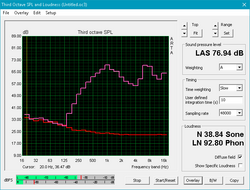
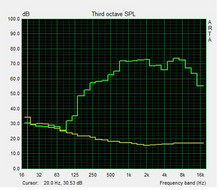
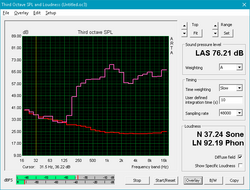
LG Gram 13Z980-A audio analysis
(-) | not very loud speakers (69.7 dB)
Bass 100 - 315 Hz
(-) | nearly no bass - on average 19.7% lower than median
(±) | linearity of bass is average (12.1% delta to prev. frequency)
Mids 400 - 2000 Hz
(+) | balanced mids - only 4.5% away from median
(±) | linearity of mids is average (8.1% delta to prev. frequency)
Highs 2 - 16 kHz
(+) | balanced highs - only 4.2% away from median
(±) | linearity of highs is average (10.3% delta to prev. frequency)
Overall 100 - 16.000 Hz
(±) | linearity of overall sound is average (24.6% difference to median)
Compared to same class
» 86% of all tested devices in this class were better, 5% similar, 9% worse
» The best had a delta of 5%, average was 17%, worst was 45%
Compared to all devices tested
» 74% of all tested devices were better, 6% similar, 20% worse
» The best had a delta of 4%, average was 24%, worst was 134%
Apple MacBook 12 (Early 2016) 1.1 GHz audio analysis
(+) | speakers can play relatively loud (83.6 dB)
Bass 100 - 315 Hz
(±) | reduced bass - on average 11.3% lower than median
(±) | linearity of bass is average (14.2% delta to prev. frequency)
Mids 400 - 2000 Hz
(+) | balanced mids - only 2.4% away from median
(+) | mids are linear (5.5% delta to prev. frequency)
Highs 2 - 16 kHz
(+) | balanced highs - only 2% away from median
(+) | highs are linear (4.5% delta to prev. frequency)
Overall 100 - 16.000 Hz
(+) | overall sound is linear (10.2% difference to median)
Compared to same class
» 7% of all tested devices in this class were better, 2% similar, 91% worse
» The best had a delta of 5%, average was 18%, worst was 53%
Compared to all devices tested
» 4% of all tested devices were better, 1% similar, 94% worse
» The best had a delta of 4%, average was 24%, worst was 134%
Energy Management
Power Consumption
Idling on desktop consumes anywhere between 4 W to 8 W depending on the Power profile and brightness setting. Medium load with 3DMark 06 already stresses the processor close to its limits for a total average draw of 36 W to be very similar to other Ultrabooks without dedicated GPUs. The small (~10.5 x 5.0 x 2.6 cm) 65 W AC adapter and is more than enough for an Ultrabook with an Intel U-class series processor.
| Off / Standby | |
| Idle | |
| Load |
|
Key:
min: | |
| LG Gram 13Z980-A i5-8250U, UHD Graphics 620, SK Hynix HFS256G39TND-N210A, IPS, 1920x1080, 13.3" | Samsung Notebook 9 NP900X3N-K01US i5-7200U, HD Graphics 620, Samsung CM871a MZNTY256HDHP, IPS, 1920x1080, 13.3" | Dell XPS 13 9370 FHD i5 i5-8250U, UHD Graphics 620, Toshiba XG5 KXG50ZNV256G, IPS, 1920x1080, 13.3" | HP Spectre 13-af033ng i5-8550U, UHD Graphics 620, Samsung PM961 NVMe MZVLW512HMJP, IPS, 1920x1080, 13.3" | Lenovo Yoga 920-13IKB-80Y7 i5-8550U, UHD Graphics 620, Samsung PM961 MZVLW256HEHP, IPS, 1920x1080, 13.9" | Apple MacBook Air 13.3" 1.8 GHz (2017) 5350U, HD Graphics 6000, Apple SSD SM0128G, TN LED, 1440x900, 13.3" | |
|---|---|---|---|---|---|---|
| Power Consumption | -21% | 4% | 5% | 8% | 5% | |
| Idle Minimum * (Watt) | 3.9 | 3.8 3% | 3.14 19% | 2.8 28% | 3.1 21% | 3.4 13% |
| Idle Average * (Watt) | 7.3 | 11 -51% | 5.22 28% | 6.2 15% | 6.6 10% | 6.3 14% |
| Idle Maximum * (Watt) | 7.4 | 11.3 -53% | 6 19% | 9.4 -27% | 7 5% | 7 5% |
| Load Average * (Watt) | 36.1 | 35.6 1% | 38.5 -7% | 32.2 11% | 35.2 2% | 34.5 4% |
| Load Maximum * (Watt) | 35.8 | 37.2 -4% | 50.4 -41% | 36.6 -2% | 34.6 3% | 40 -12% |
* ... smaller is better
Battery Life
LG has impressively upped the battery capacity of the Gram 13Z980 to 72 Wh compared to the 60 Wh battery in the last generation Gram 13Z970 without significantly changing the weight of the system. When considering the very low weight of the notebook, the battery is extraordinarily large for its size class as even the batteries of the competing XPS 13 9370 and Samsung NP900X3N are much smaller at 52 Wh and 30 Wh, respectively. Runtimes are subsequently very long at over 12 hours of constant web surfing before automatic shutdown. Owners can comfortably use the Gram 13 throughout the entire workday without needing to recharge.
Speaking of recharging, the battery charges very slowly with the included AC adapter. Charging from near empty to full capacity will take about 2.5 hours compared to almost half that on most Ultrabooks.
| LG Gram 13Z980-A i5-8250U, UHD Graphics 620, 72 Wh | Samsung Notebook 9 NP900X3N-K01US i5-7200U, HD Graphics 620, 30 Wh | Dell XPS 13 9370 FHD i5 i5-8250U, UHD Graphics 620, 52 Wh | HP Spectre 13-af033ng i5-8550U, UHD Graphics 620, 43 Wh | Lenovo Yoga 920-13IKB-80Y7 i5-8550U, UHD Graphics 620, 70 Wh | Apple MacBook Air 13.3" 1.8 GHz (2017) 5350U, HD Graphics 6000, 54 Wh | |
|---|---|---|---|---|---|---|
| Battery runtime | -61% | -12% | -51% | -6% | -12% | |
| WiFi v1.3 (h) | 12.1 | 4.7 -61% | 10.7 -12% | 5.9 -51% | 11.4 -6% | 10.6 -12% |
| Reader / Idle (h) | 11.6 | 23.6 | 27.6 | |||
| Load (h) | 1 | 2 | 1.7 | 2.3 |
Pros
Cons
Verdict
The Gram 13 exhibits unique sets of advantages and disadvantages compared to other notebooks. On the plus side, its display is more accurate out-of-the-box than many other Ultrabooks and battery life is surprisingly long. This latter aspect is particularly noteworthy as heavier alternatives like the XPS 13 or Spectre 13 both clock in comparatively shorter runtimes. In contrast to the Samsung NP900X3N, the LG is proof that battery life does not have to suffer when aiming for a super lightweight design.
The major negatives of the system are hard to ignore when placed alongside the list of positives. The lid is far too fragile and flexible especially for a touchscreen and the very limited variations in SKUs make the Gram 13 feel less capable than more popular Ultrabooks. The XPS 13, Samsung NP900X3N, and Spectre 13, for example, have Intel iris or 4K, GeForce MX150 graphics, and Thunderbolt 3 options, respectively, that the Gram 13 is completely lacking. It's a more barebones experience with the LG since users are sacrificing performance and features in the name of portability and weight.
Other key attributes like chassis rigidity, keyboard and trackpad feedback, and screen brightness are merely average if not slightly below popular competitors. As light as the Gram 13 may be, it is not the best outdoor companion since there are brighter and more unyielding Ultrabooks out there in this price range.
If outdoor visibility is paramount, then the Samsung Notebook 9 NP900X3N is the significantly brighter option while weighing less than the LG. Its light weight, long battery life, and dual M.2 slots are the major attributes the Gram 13 has over most of its competition. Otherwise, the barren system offers nothing enticing or indispensable for the high $1200 USD starting price.
LG Gram 13Z980-A
- 04/13/2018 v6 (old)
Allen Ngo




